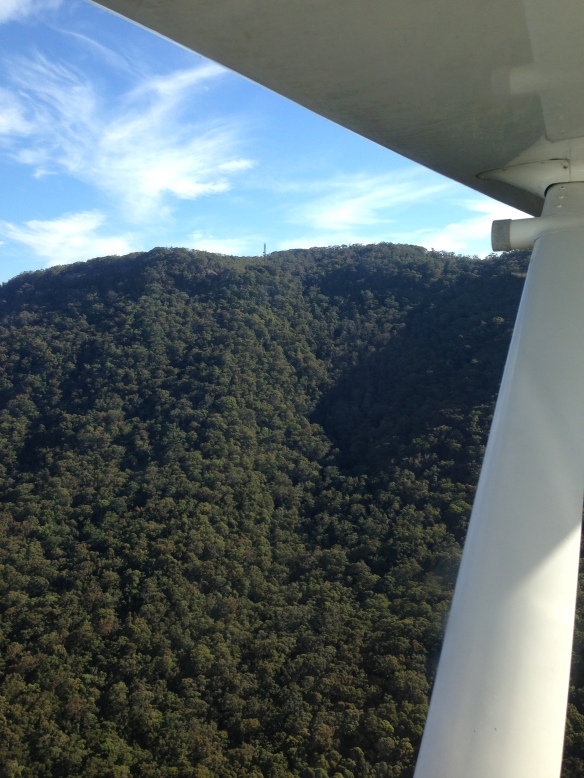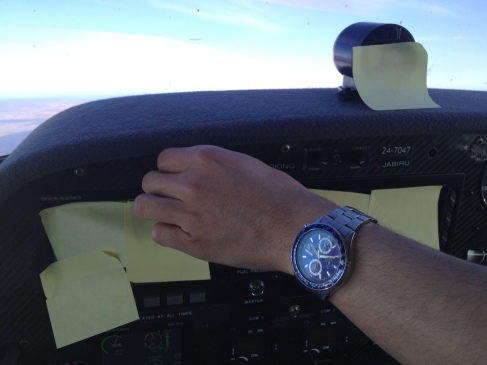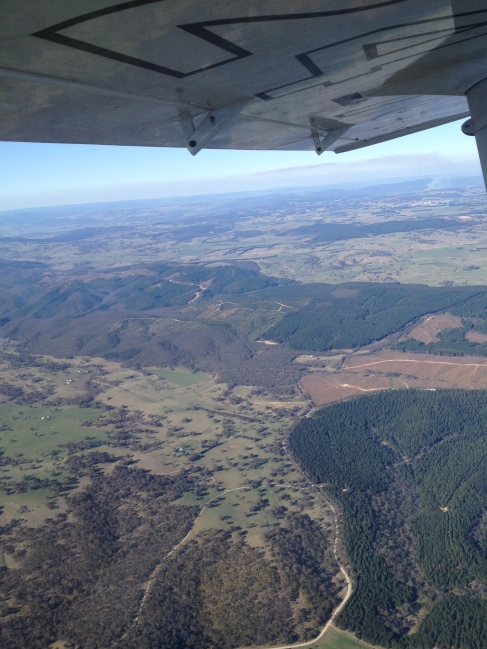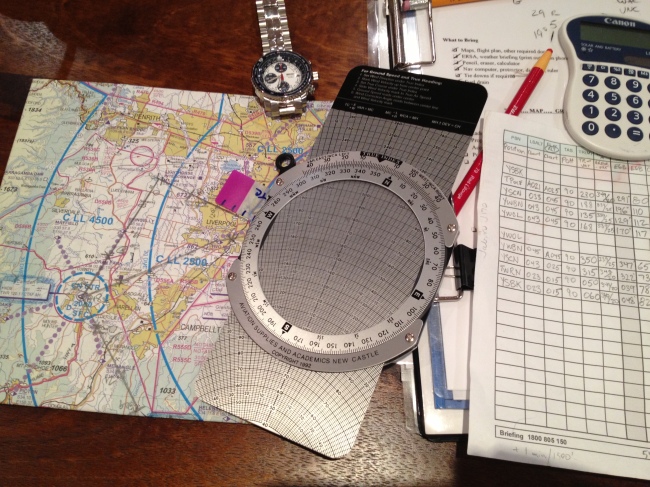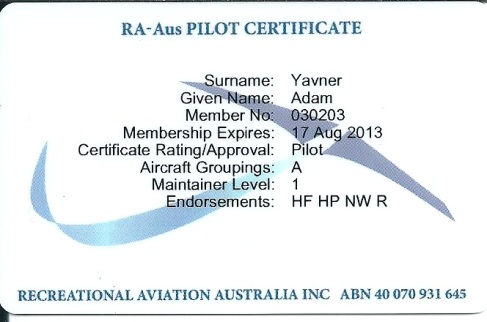I have been a very busy flier these last few weeks – haven’t even had time to really update here since my first lesson in the Piper Warrior en route to my PPL Licence!
I am going to try to be concise here and sum up the last couple of lessons, as things are moving quite quickly now.
Following the long lesson in the training area and circuits, I have done 2 short cross-country trips to make sure that my navigation procedures are sound, and also to brush up on everything else in preparation for the licence test.
The first trip was from Bankstown to Cessnock via the VFR Lane of Entry to the north. The plan was to fly via Parramatta, Hornsby, and Patonga to Warnervale then on to Maitland and Cessnock before returning via the southbound VFR Lane of Entry.
I think following the success of the last lesson, I was actually a little bit nervous this time – you always feel that maybe last time was a fluke or too good to be true. Inspection, taxi, and departure were great however on leaving the area I had some trouble identifying Parramatta and went towards Chatswood to the east until I got my bearings. I forgot to change to the Sydney radio frequency and change my transponder from 3000 to 1200. All stuff I know and do all the time, but just forgot due to nerves. No biggie, all worked out and corrected. Made great time to Patonga and headed up to Warnervale and learned a new trick.
My planned heading and speed were so accurate, that at the expected time I did not see Warnervale though I thought I should have. Chris showed me a good trick – do an orbit! That seems like a no-brainer in hindsight, but it was just the right thing to do. I did a left hand orbit and soon realised that I was smack on top of Warnervale within less than a minute of my planned arrival – just hadn’t seen it over the nose or under the low-wing of the Piper. Anyway, finished out the orbit and made my way to Maitland where we did a touch-and-go with about 17 knots direct crosswind.
That was a slightly tough landing, and on take off my seat scooted back a bit and I asked Chris to take the controls. This is a dangerous situation, and I made sure that it got reported after the flight (and the plane was indeed put into maintenance after).
Another thing I’ve had to get used to is relying on the directional gyro for heading. The Jabiru didn’t have one so I got used to using the compass or the heading indicator on the glass panel. So I had to get my head around that.
On this trip also I seemed to be letting my control over altitude get sloppy – must work on that!
After flying overhead Cessnock, I turned back around and headed back to Warnervale. Of course it wouldn’t be that simple – Chris wanted me to divert to Norah Head on the coast near Lake Tuggerah. My diversion techniques still seem to be sound, and got us there within 2 minutes of my estimate. Over the lake we did some more steep turns and stalls, and he introduced me to the topic of recovering from incipient spins.
Those are a great deal of fun and not as daunting as it may seem – just ailerons neutral and power to idle, full opposite rudder (really put the boot in!) and then level out and add power when recovered. These aircraft are not designed to spin, nor would it ever happen in normal flight, but it gives an idea of how to recover if it happens – for example on a too-tight turn onto final.
So the return was pretty normal and other than really keeping my altitude accurate, I felt it was successful – more so than I’d have expected given only my second time in the Piper. It really is a lovely intuitive aircraft to fly!
A week later, i booked my second cross-country tip – this time to the south, and we were going to add a few new tools to my toolbox.
The plan was to go west to Warragamba Dam then south to Goulburn, then on to Crookwell, Bindook and back again via the dam. This went very smoothly and happy to say that I was on top of my transponder and frequency changes – but I’ve done this trip more often ;-).
I hit local landmark Tadpole Lake and Warragamba Dam each within a minute or two of my plan, then on the long 40 minute stretch to Goulburn, Chris instructed me on how to use the navigational aide called the Non Directional Beacon, or NDB. This really feels like cheating to me, but adds another layer of accuracy to navigation. In a nutshell, an aerodrome will have a beacon that transmits on a particular frequency. You tune to this frequency, listen to the morse-code identifier, and test the system – then you have another dial to look at called the Automatic Direction Finder, or ADF. The needle simply points in the direction of the beacon – simple as that!
I am also pleased to say I held my altitude and heading extremely accurately on this trip, so I guess I got that bit worked out of my system!
Anyway, did a touch and go at Goulburn then headed towards Crookwell. There we did a simulated engine failure and worked on precautionary search and landings – PSLs. Over all not bad, just have to remember to make my PAN-PAN call and a few other small things.
Now it got fun! On the way back, it was time to start my introduction to instruments! We got up to 7500 feet and headed right into some clouds (Chris is an IFR instructor, so its cool). He explained how the attitude indicator is the primary thing I should look at, and to keep the dot in the centre and wings level at all times. Then of course, I can move the dot up or down and turn as necessary, but to maintain focus on that. Other instruments can then be used to verify my speed, rate of climb/descent, etc.
I was absolutely gobsmacked at how easy it was to be utterly convinced you are in one position only to find out you are really in another. What I “felt like” was a gentle climb into the clouds, turned out to be a nose-down descent which I saw once the cloud cleared! You have to learn to not trust your senses AT ALL. The eye just picks out the nearest straight line and says “ok that’s the horizon” and your brain just works everything around that. You could actually be flying completely inverted and as long as you got there gradually, you might not even know!
So that was sobering, but exhilarating all the same. We did this for about half an hour, mostly with a hood on so I could not see outside. I think that was plenty for the first time, but can’t wait to do it again. Of course NEVER on my own!!
I used the ADF to reach Bindook, then instead of continuing to Warragamba, Chris threw a diversion in – let’s go to The Oaks airfield…. Ok fine I say and draw my line on the map, adopt the new heading, then start making adjustments for wind. I have a little trick for the Oaks – if you can see Camden, the runway is pretty well aligned with the Oaks. So I just flew on my new heading, found Camden and followed the runway more to the West then got over The Oaks within 2 minutes of my revised ETA 🙂
After this it was just a matter of going back to Prospect Reservoir and then Bankstown. I did forget to set my transponder back to 3000 on entering the Bankstown control zone. I need a way to remind myself…. after a 3.1 hour trip, my brain is just fried!
So we had a good briefing, got a nice list of things I did right and things I need to work on, and am now busy preparing for my next flight – for my Controlled Airspace Endorsement! I got some great constructive feedback and he said he thinks probably I might have even passed had that been the real test! Wow… I wouldn’t have thought so, but he knows best! We’ll see – the pre-test flight is next weekend 🙂
More soon….
